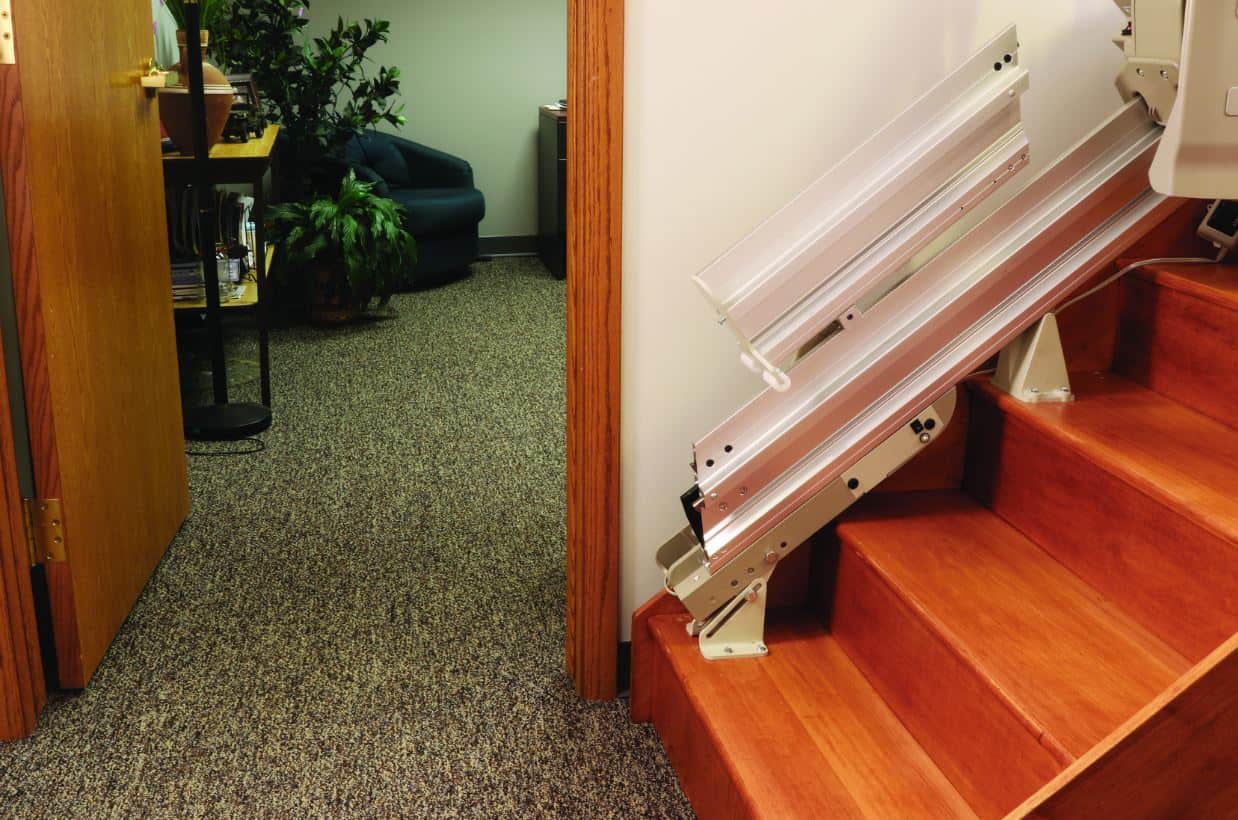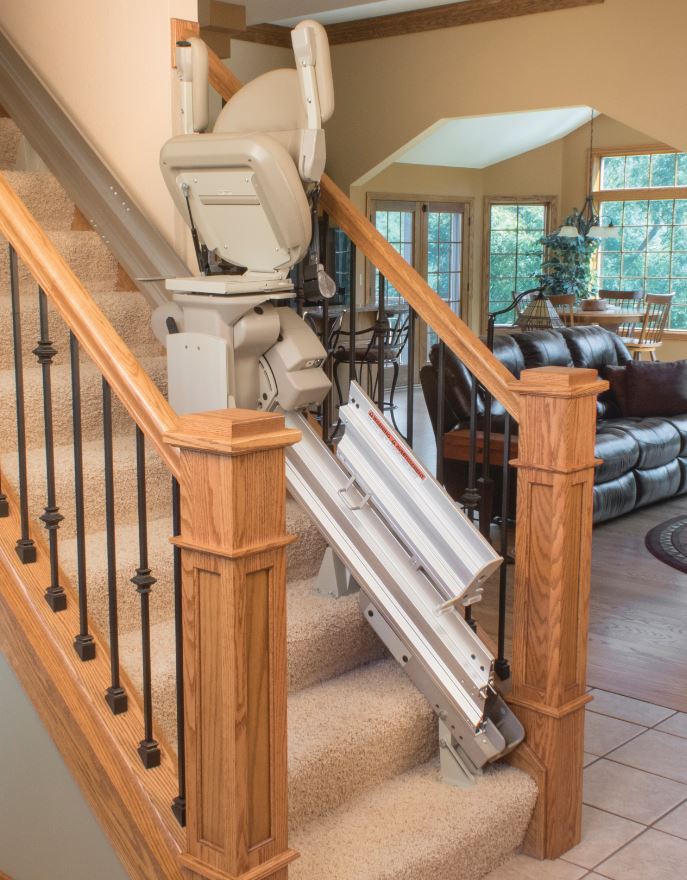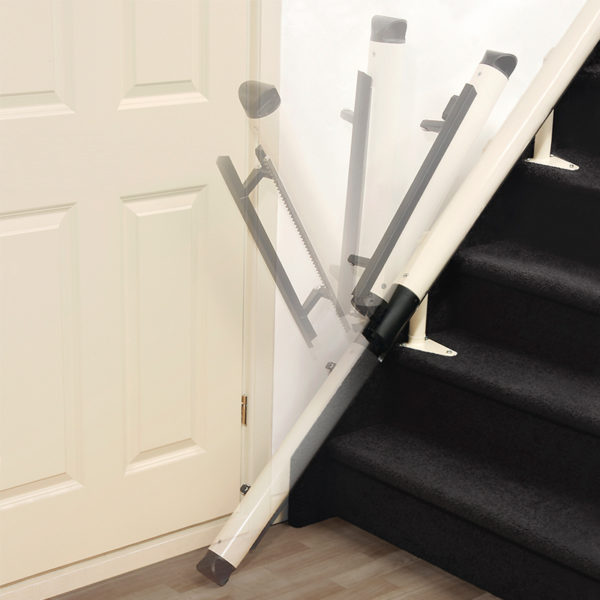Choosing Between a Manual & Power Folding Rail for a Stairlift
Posted on by Eric Rubel
The installation of a stair lift provides a safe and easy way for people with limited mobility to navigate between the floor levels of their home. The process of purchasing a stair lift is often a smooth one as stair lifts safely fit on most staircases. However, there are times when the extended rail of the lift at the bottom of the stairs presents an issue or two that needs to be addressed before installation.
 One of the most common is that the bottom of the staircase ends in an area that receives a lot of foot traffic on a daily basis. Straight stair lift rails must stick out at least 16 inches past the bottom step, which can lead to the rail becoming an obstruction, and in some cases, a tripping hazard. Another potential issue is when there is a door at the bottom of the stairs. This is common when the lift is installed on a staircase that leads down to a basement.
One of the most common is that the bottom of the staircase ends in an area that receives a lot of foot traffic on a daily basis. Straight stair lift rails must stick out at least 16 inches past the bottom step, which can lead to the rail becoming an obstruction, and in some cases, a tripping hazard. Another potential issue is when there is a door at the bottom of the stairs. This is common when the lift is installed on a staircase that leads down to a basement.
If it is determined by one of our stair lift experts that the rail at the bottom of the last stair tread is going to be an issue, we'll recommend adding a folding rail. For most straight stair lift models, a folding rail is an optional upgrade. The folding rail can be manual or powered, but the question is, which type of folding rail makes more sense for your needs?
 Why Choose a Manual Folding Rail?
Why Choose a Manual Folding Rail?
The manual option is most often chosen when there is a family member or caregiver living with the person that is in need of the lift. There is a handle on the bottom of the manual folding rail that makes it easy to pull the rail up and out of the way when the lift is at to the top landing of the staircase. When the user is ready to ride the lift back to the main level or basement (depending on the staircase that the lift has been installed on) the caregiver or family member can then easily pull the rail back down.
An advantage of choosing a manual folding rail rather than a power one is the cost benefit. A manual folding rail is about half the price of a power folding rail.
Additional Tip: If are you are on a tight budget and do not want to spend more for a folding rail option, it may make sense to add a plant at the bottom landing where the rail is sticking out. The plant helps prevent the rail from becoming a tripping hazard because a plant is much easier to see than a stair lift rail.
 Why Choose a Power Folding Rail?
Why Choose a Power Folding Rail?
A power folding rail is recommended over a manual folding rail when the person in need of a stair lift is living alone and prefers to remain independent. When riding the stair lift up to the top landing of the staircase, the chair stops at a certain point so that the rail can automatically fold itself up. The rail remains folded up until you are ready to ride the stair lift back down. When you decide that you need to get back down to the main level of your home or the basement (if the lift is installed on your basement stairs), the chair will again stop at a certain point so that the rail can automatically fold back down and allow you to safely reach the bottom landing.
Adjustable End Plate Makes Folding Rails Easy to Install
Bruno's aluminum rail for its straight stair lifts are now being built with an adjustable end plate whenever a manual or power folding rail option is selected. The adjustable end plate will make it easy to adjust the end of the rail to compensate for uneven surfaces, which will shorten the time it takes to install the unit.
Please note that these descriptions apply to the two Bruno straight stair lift models; Bruno Elan and Bruno Elite. A folding rail cannot be added to a Bruno custom curved rail. However, if you have a curved staircase and a folding rail is a definite need, then you'll need to consider the Handicare Freecurve. The Freecurve stair lift is the only curved rail stair lift that can be equipped with a power folding rail.
If you have any questions in regards to these two folding rail options and how to determine which works better for your needs and living arrangements or are interested in a free assessment, please contact us.
